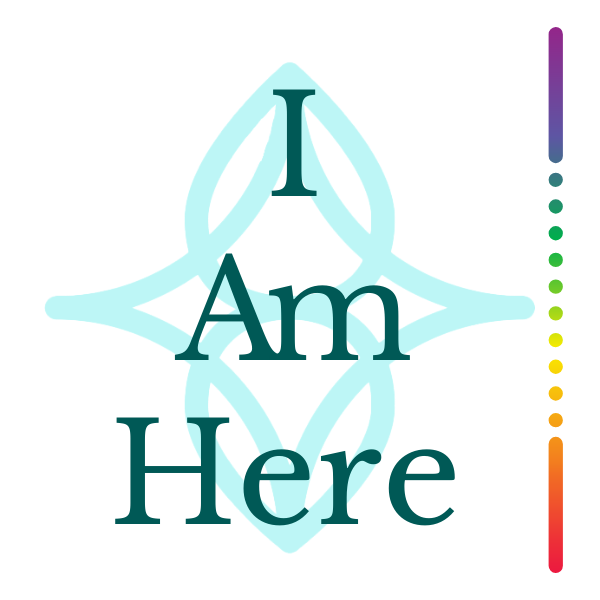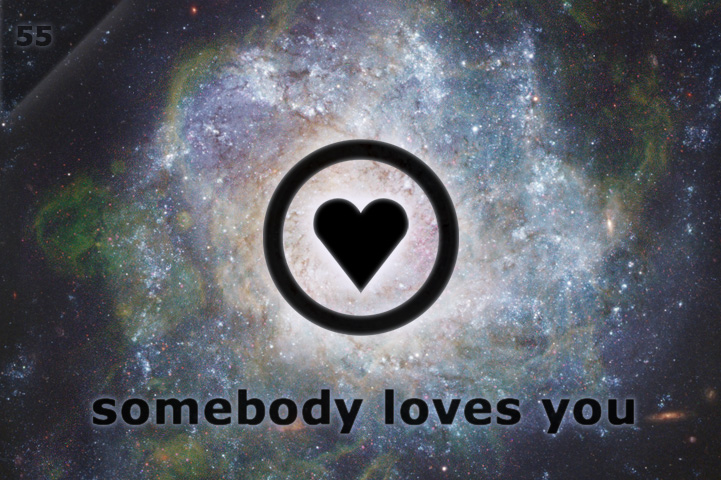Did you know that when you are suffering in your feelings, the same area of pain lights up in the brain as when you are physically hurt?
Our language is full of it. “He stabbed me in the back”; “She’s suffocating me”; “He gave me a kick up the ass.”
Yet, it is not widely known that there is clinical validation for the impact of feelings and emotions, and even clinical consequences.
At street level, someone who is stabbed in the physical heart gets immediate medical attention. But what kind of attention is needed for someone who is sentiently “stabbed in the heart”? And what happens if the feeling is not met, released or expressed?
If it’s not “all in the brain”, but “all reflected in the brain”, then how can awareness in the dimension of wordless feelings affect our living ability to be free?
Furthermore, how does the neural identification of emotional pain as physical pain affect the border between emotional health and physical health? How is the body mentally instructed to respond to unhealed emotional pain, and how is this going to effect physical wellbeing?

Anterior cingulate cortex
In 2011, neuroscientists revealed that when we suffer the pain of social rejection (at the heart of our aspirations to manifesting a life lived from the core of unity or nonduality), the same neural networks, within the anterior insula and the anterior cingulate cortex, are activated as when we experience a direct physical pain. (See Paper in PNAS: Social rejection shares somatosensory representations with physical pain)
These revelations are still hardly integrated into the therapeutic world, where the dimension of feeling remains vastly under-rated as an indulgent luxury today’s fast-paced life-style can’t afford.
Repeating a similar pattern, many spiritual seekers could have been encouraged to dissociate from the dimension of feeling, as showing a kind of unliberated imperfection that betrays a lack of freedom in states of pure consciousness or awareness. (If you’re concerned with the bad stuff: jealousy, fear, anger, grief, how can you claim to “get” nonduality?)
In a disturbing way, sometimes, nondual teachings – in their aspiration to reside exclusively in perspectives of pure consciousness, can find themselves affirming the social judgements that keep people locked in suffering – not physical suffering – but emotional suffering. Denial is denial, whether its from an allopathic doctor that hands out Prozac with a judgemental eye towards to treat panic attacks, or from the nondual community that looks askance with a subtle judgement that this person is clearly not “there” (where?)
Yet, if we once awakened into an experience of pure consciousness, should we then be free of emotional pain? Does it not hurt when we endure a loss, abuse, or cruelty? Does it not hurt when we witness the pain in others?
While all of us will immediately reach for a medical solution to a physical crisis, not all feel the same freedom with an emotional one, especially if there is judgement around so-called negative emotions. Yet in the area of sentience, this judgement becomes a fallacy. The same area of the brain will light up, (if we are truly in unity), on witnessing any pain – also in another person or animal – just as it does when we experience it within ourselves.
Pain is also here, now
So the anterior insula and the anterior cingulate cortex brain regions are where suffering is registered in the brain, and from where appropriate responses are issued. The brain, not differentiating between physical and emotional suffering, and without liberated sentience, will send instructions to the body as if the pain or threat of pain were physical. These can vary from sensory isolation of the affected area within a certain space, all the way to going into possum state (the last instinctive defence when an animal believes it is to be killed). The body, voice and movement will contort in a manner similar to a physical affliction.
But while physical pain can get processed through the physical, how are we able to process emotional pain, and what happens if we don’t have that freedom?
Consciousness V Feeling Awareness
To come to the gut of the healing matter, it can be helpful to make the differentiation between consciousness and awareness, as described in the book I AM HERE.
Consciousness, so much part of the wakened state and awakening, is intimately connected with the level of mind. For example, at the same time that we experience a physical pain, we can consciously witness ourselves experiencing it. This will happen as a reflex (for fight, flight or freeze reactions associated with survival). The onset of pain, as a rule, fires the nervous system, leading to an experience of heightened consciousness. We are immediately in the “Now”, and ready for action.
Yet when the survival threat has gone, the pain can still remain, throbbing on our burnt foot, or throbbing around our broken heart. While we can consciously tend to the foot, the broken heart is a bit awkward for consciousness. We can remain conscious of it, but that makes the pain worse.
We can use our consciousness to identify “where” the emotional pain is in the body, and relativize and sooth it by switching our consciousness to areas where there is no pain. We can move with our consciousness behind the emotional pain area, in front of it, around it’s contours and in and out of it. All of this is tremendously helpful, if we have the inner freedom to do it. It helps show the brain that the pain center is not absolute, not fixed, not an aggressor.
Yet often witnessing and relativizing is not getting to the depth of healing. The area was closed down energetically by the brain before any healing can be done. This is partly due to a deep mental programming to seek pleasure and avoid pain. It is also affirmed by conditioning in which there is a shame and embarrassment around negative emotion. For example, the handing out of valium to a young widow, to “get her through” the funeral, is the kind of norm that can actively sabotage a natural grief process. These kind of emotional freezes can become so critical that they create mental disorder, as an individual develops a habit of “skipping” the dimension of feeling or sentience, in such a way that it no longer seems to exist. Attempting to live from the mind alone and to retain conscious control of the experience of life, inevitably crashes the system sooner or later, as life rarely conforms to our subtle agendas of separation.
When we release consciousness and move with pure, wordless, feeling awareness, we re-open a dimension which is critical to the mental, physical and sentient well-being of the whole. This movement gives space and permission to the deeper layers of being that underlie, pre-exist and outlive all dualistic attempts at conscious control.
The Art of Feeling
While a lot of emphasis is put in modern spirituality on the existential “now”, the dimension of feeling is always, anyway in the “Now”. We feel our feelings now. We can’t feel them yesterday, without feeling them again now.
The moment we choose to feel a feeling, we have moved beyond thought and into direct experience. That is, we have moved out of the programing of the temporal, linear, left brain, which builds agenda through the composition of time frames and stories. Feeling what we feel does not take place yesterday, and will not take place tomorrow. It always happens in the now. Feeling is so much in the now, that even if the thoughts are in the future, the feeling will still be in the eternal now. Because of this, when we move from consciousness to awareness, or from mental awakening to sentient presence and begin to feel what “is”, old, unfelt feelings will emerge, even if decades have passed in the interim.
Contrary to popular belief, it is not possible to “think” away a feeling. We can check it rationally and we can relativize it. We can justify, excuse, build stories and rename it. But all of this thinking activity is dependent on the allowance of the feeling in the first place. We cannot know what the feeling is that we think we are “thinking away” (by changing our thought patterns) unless we first agree to feel it.
Feeling is happening (and the brain is responding to it) regardless of our thought processes. It can’t be fundamentally changed by different thoughts, any more than you can take away the pain in your foot by thinking about beaches in California. The pain is there anyway, all the mind can do is distract.
Yet feelings are not an empirical object (unlike the book that fell on your toe). How do you feel a cloud? How do you open perception to something so intangible, yet, (ghostlike), nevertheless haunting our comfort zone? A whole different faculty is required, the faculty of feeling awareness.
The agreement to feel our feelings – especially our non-physical ones – is a critical stage on the path of inner growth and healing. Feeling a feeling is not the same as witnessing it. When we feel a feeling, the feeling often begins to move. It can change vibration, change tone and change location. Feelings can have a rhythm, and when we agree to feel them they can at first intensify.
What can seem like a defined sensation in one space (such as a pain in the chest), can show its own energetic pathways, reappearing in a tightness in the throat, or sensations of discomfort around the sides of the physical head. Emotional pain is highly responsive to feeling awareness – and it readily tells its stories. All we need to do is respect it.
In the shifting of location of emotional pain, (and in our mind’s fear-based attempts to distract us from feeling what we feel), a spaciousness is opening up. The conceptual prison in which we hold our bodies is beginning to loosen up, as that awareness which is able to feel itself feeling begins to surround, infuse and allow all the areas of sentient pain. This awareness is receiving the sentient transmissions, reconnecting frozen or wounded energy fields to the whole, allowing transformation because it (your awareness) has no agenda to separate anything from itself.
When we agree to feel a feeling (for example, the pain of rejection), the feeling itself can become a curious experience. What is this phenomena? How does it have a temperature of hot and/or cold? How does it resist? How does it seem empirically to exist as separate from – what? How does it respond to love? What happens if I just wait all around it, patiently staying, to see if it wants to move or expand? Am I the feeling or the one that feels?
If we inquire further, the miracle of being able to experience pleasure or pain can lead us into greater freedom.
How is it to feel the quality of that which is able to feel? What is it in me that (at the front line) is able to feel love, pain, peace? What are these feelings and how do they differ? What is the feeling aspect that moves from one feeling to another? What feels atmosphere? How do I feel myself to be, at source?
For some, the agreement to feel their feelings at first brings them directly into the areas where they suffer. But later, they discover that there has also been a refusal to feel pleasure, love or peace. A whole repertoire of unconditional human experience begins to open up.
“Your joy is your sorrow unmasked”
Survival responses issued consciously or unconsciously which provide a beautiful mechanism to physical pain, are far less effective when it comes to emotional pain. At best, they repress symptoms, rather than allowing the natural feeling responses to go through their natural stages of transformation and restoration to unity within the energetic whole.
Certain sufferings, such as the pain of rejection, are inevitable within a human race divided into multiple bodies. If these stabs and blows are not allowed to be felt, they become dictators on the state of the heart, and by degrees close down our sentience and our natural and healthy ability to function in compassionate connection with the environment. This lock down gives tremendous stress to the whole system, on all layers.
For those schooled in nonduality, the differentiation between the dimensions of consciousness and awareness is well worth examination. Consciousness of consciousness of consciousness can be a truly liberating experience – one of inherent unity and light. Yet these awakenings are often followed by suffering. The expansion of consciousness means the control (censorship, denial, repression) previously asserted by the mind on feelings is released. Sentient suffering emerges – with many of those unhealed wounds trapped in the “now” beginning to flood through the opened doors of the mental prison. This is an opportunity for healing – but it requires sentient awareness.
Awareness of awareness of awareness, or the expansion of feeling inwardly into a feeling of feeling to a refinement of the sense of sentience has the potential to liberate an even more essential dimension of perception.
The way to unity is through allowance, never through rejection. With time, even the greatest dualistic pain of all, the pain of rejection, can become relative through its antidote of inner acceptance and in this, one of the greatest deterrents to joyful human manifestation can be realized as something more like a brush with a burning bush – pain that is unexpected, miraculous and an opportunity to reunite with the source of all we are.




